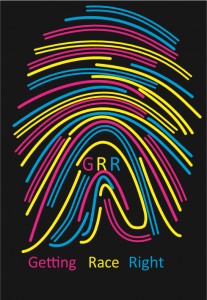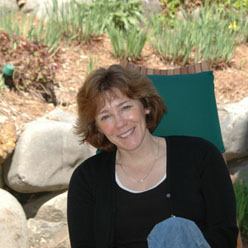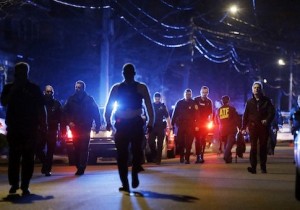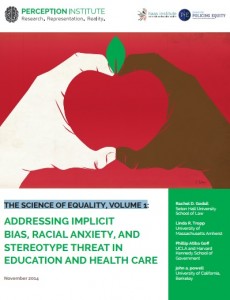what is an effective way to combat stereotypes?

And so are nosotros stuck? Are we slaves to stereotypes? Are they so omnipresent, so subtle, so powerful, that we have no choice but to follow where they atomic number 82?
No. Not past whatever means. At that place are lots of things we tin practice.
Educate Yourself
I skilful first step is exactly what you are doing now—learn more most the problem. Increase your awareness of racism and how to gainsay it. White students at Rutgers University who completed a grade on prejudice and disharmonize became less prejudiced (a measure of their feelings) and less stereotypical (a measure of their beliefs) compared with like students who did non take the grade (Rudman, Ashmore, and Gary, 2001). It is of import to note that the class dealt quite specifically with prejudice and disharmonize. The real do good comes from asking difficult questions, not avoiding them. I enjoy "jubilant diversity." Learning near new cultures, trying new food, and commemorating new holidays broadens the listen and opens usa upwards to new possibilities. But in the absence of dealing with the tough issues of prejudice and stereotyping, information technology doesn't usually affect the primal means in which we think nigh people of other races and cultures. Celebrating diversity is fun and worthwhile, but information technology's no substitute for addressing difficult questions head-on.
One of the all-time things to practise is to follow antiracist activists and scholars on social media.
Want a good volume? Ibram X. Kendi, writer of Stamped from the Beginning and How to Be an Antiracist suggests these. Time magazine says these are good. But don't read simply one book. You need a variety of perspectives. Wait for several books written by people of dissimilar backgrounds and genders. So many good books have been written from various faith perspectives, also.
Meet New People
Learning near race and racism is good. But it's non enough by itself. At that place is a huge research literature, going back decades, on what happens when we constitute meaningful, reciprocal relationships people from other groups (Allport, 1954). Existence in equal-condition (but non dominant/subordinate) relationships with people from unlike backgrounds enables us to run into them as complete homo beings: members of their social groups to be certain, but unique in their detail prepare of personal experiences and characteristics. The result of this kind of contact is a significant driblet in both prejudice and stereotyping (Pettigrew and Tropp, 2006). Compared with White children in desegregated schools, for example, White children in an all-White school are more than likely to say negative things about Black children they see in a moving-picture show, and are less probable to assume that Black and White children can exist friends (McGlothlin and Killen, 2006).
A piddling feel with cross-racial interactions too reduces anxiety among both majority- and minority-group members. As it turns out, getting to know people from other backgrounds commonly goes better than nosotros look. That provides boosted motivation, and increased confidence, to develop a larger number of such relationships (Mallett, Wagner, and Harrison, 2011). Nosotros also get more than empathic as nosotros learn to care about other people and to understand how they view the world (Tausch and Hewstone, 2013).
Of form, how you go nigh getting to know people is very of import. A stance of cultural humility is helpful—approaching people from unlike backgrounds with the same kind of respect and consideration you desire to receive from them.
In that location are several features of cultural humility (Tervalon and Murray-Garcia, 1998), including
- Learning to exist self-enlightened, to understand our own cultural perspectives, how our social identities have been shaped, and how they, in plow, have informed our perspectives.
- Reducing any power imbalance betwixt us and the other person. This is especially of import when we run across someone from a different background on our own turf, where our social grouping is dominant.
- Entering into a mutual human relationship in which both parties open themselves upwards to the other. If I'yard learning things about you without revealing anything of myself in render, I'grand not forming a reciprocal relationship, and I shouldn't exist surprised if you are uninterested in sticking effectually for more.
- Working for institutional change. Considering institutional policies and processes affect more people than we practice as individuals, cultural humility requires advocating for fair treatment throughout the organizations of which we are a role.
Get motivated
Remember the old joke that information technology but takes 1 therapist to modify a light bulb—merely the light bulb has to want to alter? Research has shown that 1 way to avert letting stereotypes control your thinking is but to have the motivation not to be controlled. All it takes is a little extra awareness and a lilliputian actress effort.
 Stereotype researcher Patricia Devine (1989) has made a helpful distinction here—we all know the racial stereotypes so common in this state, but we don't all have to believe them. Stereotyping is the default pick set by our national history, but we tin change the setting. We tin can resolve to pause the bad habit of stereotyping by determining to notice when it occurs and deciding to think a dissimilar way.
Stereotype researcher Patricia Devine (1989) has made a helpful distinction here—we all know the racial stereotypes so common in this state, but we don't all have to believe them. Stereotyping is the default pick set by our national history, but we tin change the setting. We tin can resolve to pause the bad habit of stereotyping by determining to notice when it occurs and deciding to think a dissimilar way.
Prof. Devine and her colleagues conducted a compelling study of how to help people overcome their implicit biases (Devine et al., 2012). They taught university students five techniques for reducing stereotypic thinking:
- Stereotype replacement (learning to recognize i'due south stereotypical responses to other people, and to generate not-stereotypical alternatives to explain that person's behavior)
- Counter-stereotypic imaging (remembering or imagining people from stereotyped groups who practise not fit the stereotype)
- Individuating (paying attending to other things well-nigh someone besides the stereotypes of their grouping–personal things that can help you see them as an individual, not only a group member)
- Perspective-taking (imagining what the world looks like through the eyes of a stereotyped person)
- Contact (deliberately seeking opportunities to get to know people from stereotyped groups)
These techniques are designed to assistance someone break the stereotype addiction. Just every bit with any bad habit we desire to modify, we demand to recognize what we are doing and then substitute other, more positive, behaviors in their identify.
After four weeks of practicing these techniques, White academy students showed significantly lower implicit prejudice against Blackness people, equally measured past the Implicit Association Test, a reduction that persisted another iv weeks after that. (Information technology's pretty hopeful, I remember, to see positive changes on such an ingrained habit in only a month.) The participants also indicated that they were more concerned nigh racial bigotry than they were before. The students who did not receive the grooming showed no change; their bias confronting Black people continued as earlier.
Information technology'due south no fluke that concern for bigotry proved important in this report. When stereotypes aren't directed at u.s., they are piece of cake to disbelieve or ignore. Remembering that stereotypes have consequences—that they frequently atomic number 82 to discrimination—fuels the motivation we demand to break the stereotype habit, and to substitute new, better thought processes in their identify.
Get the facts

You are an off-duty police officer, dressed in civilian clothing, who comes across a criminal offence. You draw your gun and prepare to accept action when a uniformed officer arrives. At the scene of a crime, out of uniform, weapon fatigued, you probably look like a doubtable—perchance at risk for existence shot by your fellow officeholder.
An off-duty officer in this kind of state of affairs has been shot and killed by a uniformed officeholder ten times in the U.S. since 1982. Nine of those times, the officer killed was Black or Latino (Baker, May 27, 2010).
It'due south not common for off-duty officers to be at the scene of a crime. But it is common for law officers to come up beyond people who may or may not be suspicious and have to decide—in an instant—whether that person is a danger, or isin danger. It's life or decease, and whatever officeholder would want to get it right. Even when people actually want to do the correct thing, however, implicit racial stereotypes tin play a role in their split-second decision-making.
In the research laboratory, as on the streets, White people are more than likely to mistake a wallet or a jail cell phone for a gun if information technology is held by a Black man instead of a White man (Payne, 2001). That'southward not inevitable, however. Getting the facts tin can assist. In 1 study (Plant, Peruche, and Butz, 2005), White research participants "shot at" White suspects only when they were holding a gun (every bit opposed to, say, a cell phone). But they "shot at" Black suspects if they were holding anything at all. With practise and feedback, however, the participants learned to respond to the actual objects, not the color of the men property them. With experience, they became more than accurate and less stereotypical in their judgments. The experience fifty-fifty left them less likely to think about race. When given a word-completion task, they were less likely than a control group to turn something similar R _ _ E into RACE, opting instead for Dominion or some other not-racial word. Yous might think that spending fourth dimension on a computer looking at photos of men of different races and deciding whether they were belongings a gun would take heightened participants' sensitivities about race. On the contrary, it allowed them to focus on the real outcome—guns vs. other hand-held objects—and reduced the office of race in their thinking.
A huge report sponsored by the Found of Medicine (Smedley, Stith, and Nelson, 2003—an outline of which is here) recommended getting the facts as one of the best remedies for racial disparities in health intendance:
Standardized data collection, however, is critically important in the effort to sympathise and eliminate racial and indigenous disparities in healthcare . . . collecting appropriate data related to racial or indigenous differences in the process, structure and outcomes of care tin help to place discriminatory practices, whether they are the result of intentional behaviors and attitudes, or unintended—but no less harmful—biases or policies that result in racial or ethnic differences in intendance.

Manhattan District Attorney Cyrus R. Vance, Jr. authorized a written report (McKinley, July 8, 2014) to see whether New York City prosecutors were treating suspects any differently according to their race. Prosecutors have a fair flake of latitude in deciding how to go on with their cases, which could open the door for stereotypical controlling. Theleere was no racial disparity in their decisions about whether to take a instance, merely there was a disparity in all the other of the steps in the process. Relative to white and Asian suspects charged with identical offenses, Black and Latino suspects were less likely to have their cases dismissed, less likely to be offered affordable bail, less likely to be offered plea bargains that avoided jail time, and more likely to exist sentenced to serve fourth dimension in jail at the finish of the process.
In response to the findings, Mr. Vance asked his employees to go through implicit bias grooming to aid them identify means to treat all suspects adequately, regardless of their background–non different the "shoot/don't shoot" training in the guns vs. cell phones study.

Getting articulate almost the facts on the basis is essential in order to uncover personal and institutional biases that escape our notice fifty-fifty while shaping the social situations inside which we live. As Law Professor Cynthia Lee (2013) argues, "The furnishings of implicit racial bias are particularly probable to operate under the radar screen in a society similar ours that views itself as postal service-racial." If we determine in advance that we are not subject field to stereotypes, we eliminate all possibility of finding out whether that is actually true.

In that location are thousands of research studies on stereotypes and how to overcome them. Ane good summary, published by the Perception Institute, is called The Science of Equality, Volume I: Addressing Implicit Bias, Racial Anxiety, and Stereotype Threat in Education and Wellness Care.
The Bottom Line: Don't want to go with the flow and absorb the racist letters–and the stereotypes–of the broader club? It will take a piffling endeavor, just there are means to avoid existence poisoned by the smog that we breathe.
Source: https://blogs.hope.edu/getting-race-right/our-context-where-we-are/the-history-we-inhaled/how-do-we-rid-ourselves-of-stereotypes/
0 Response to "what is an effective way to combat stereotypes?"
Post a Comment